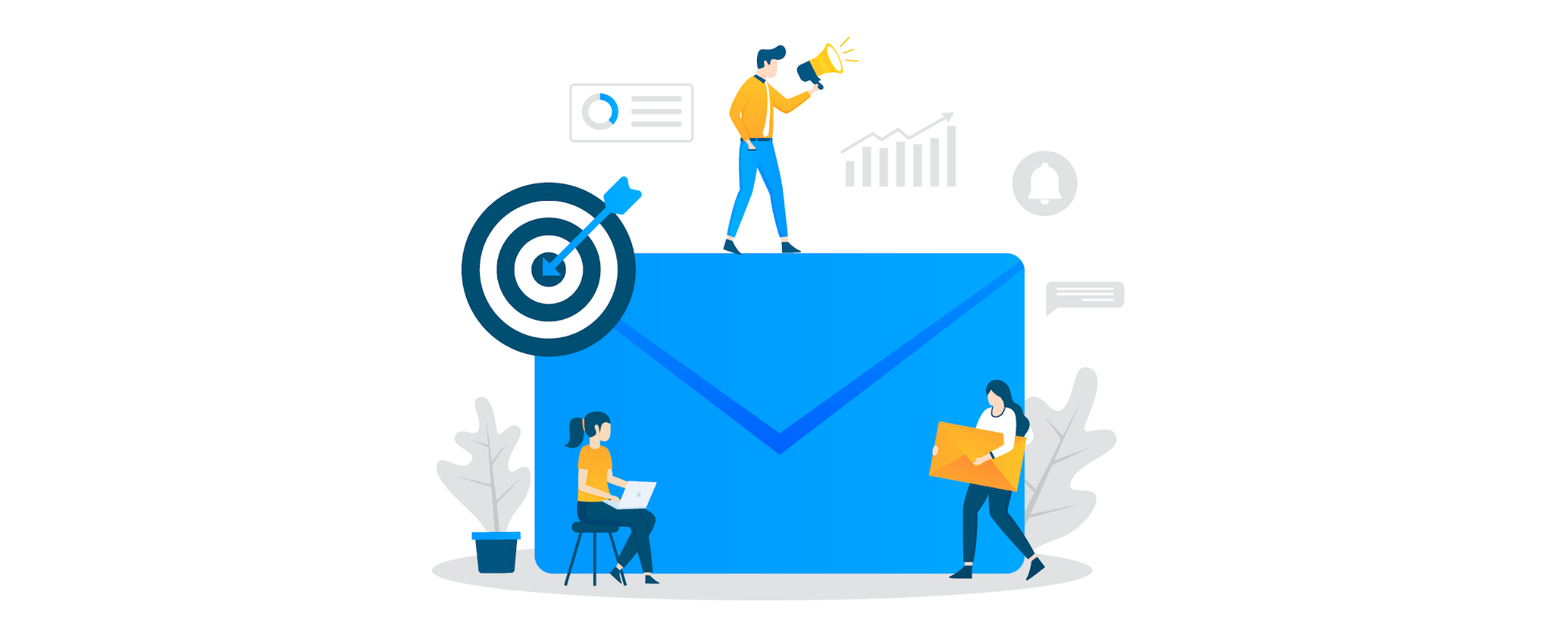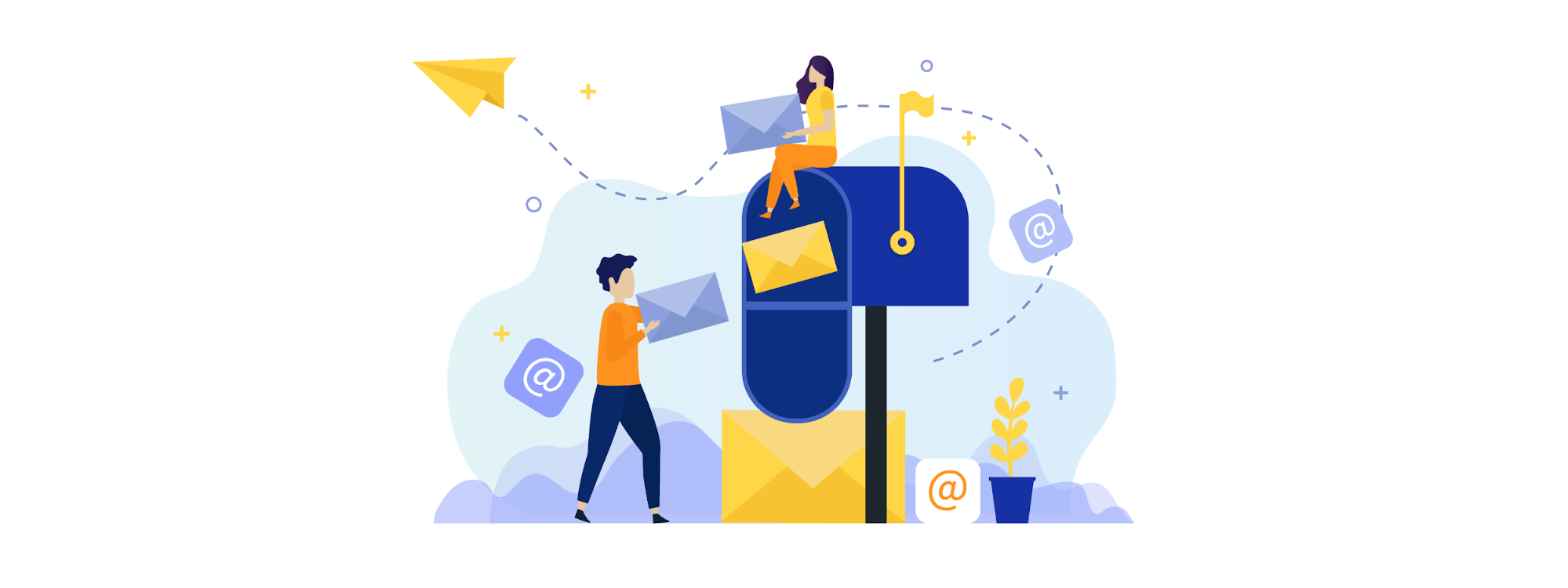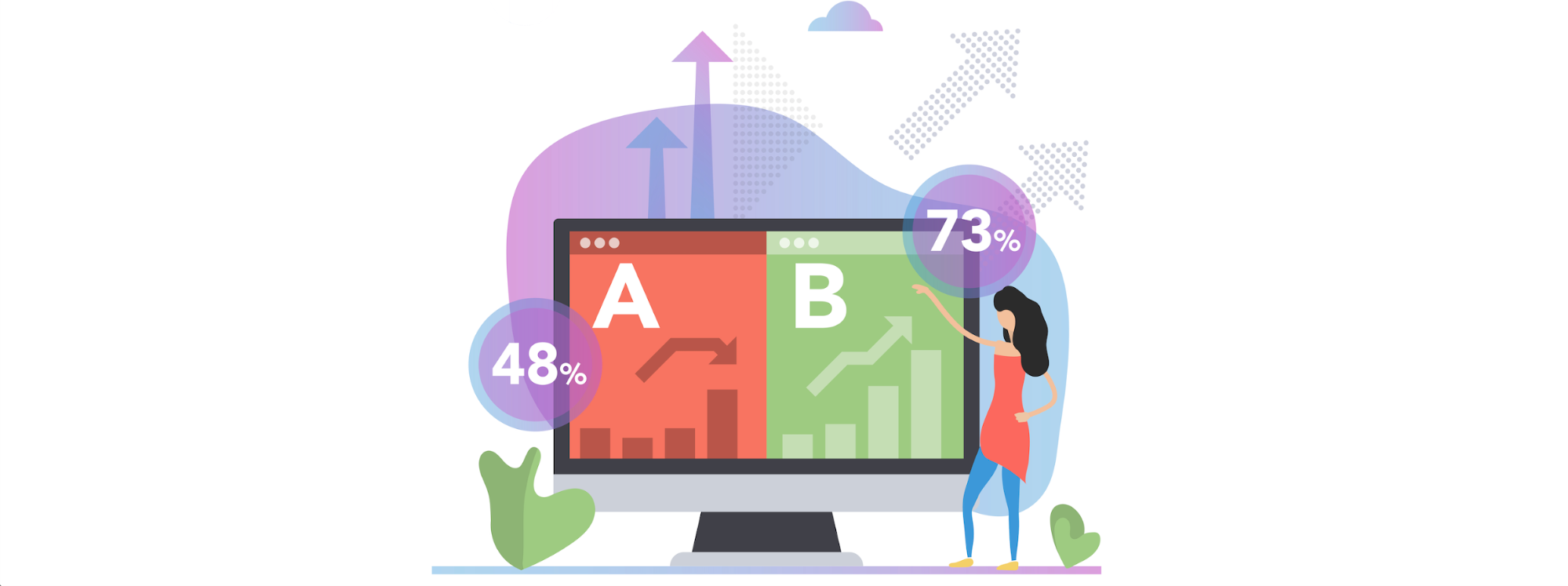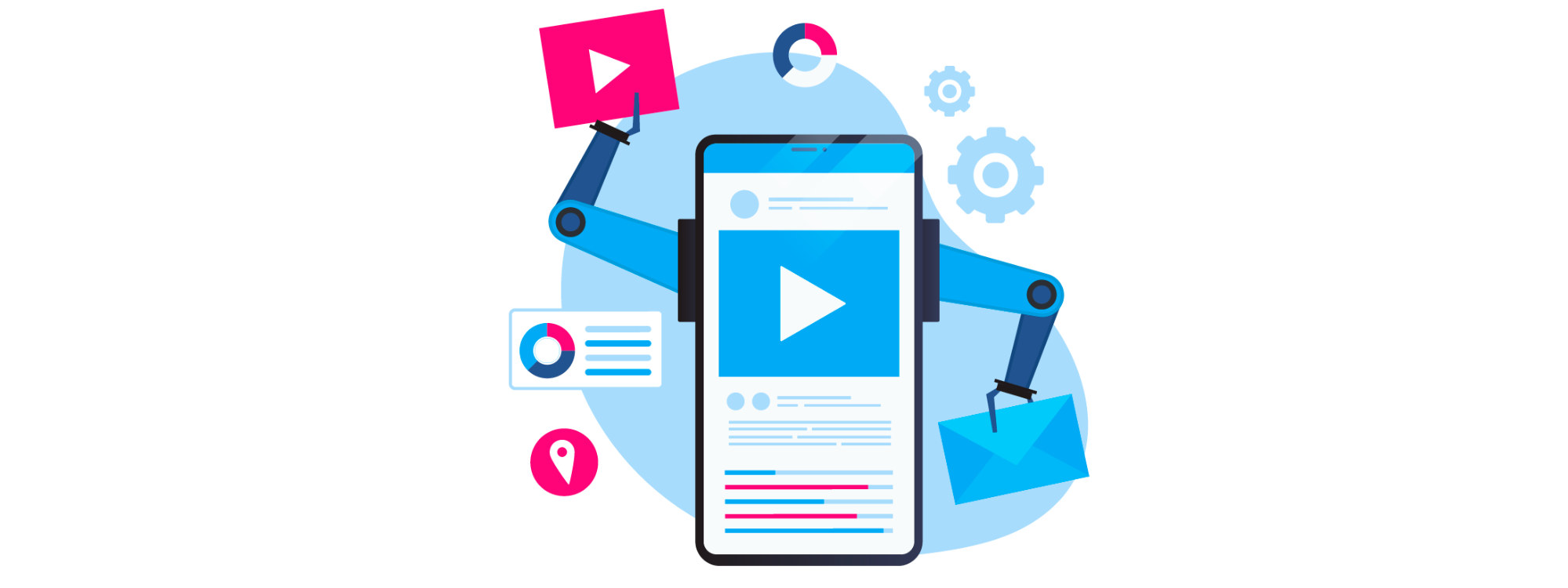10 Tips to Increase Your Email Marketing Conversion Rates
Being an essential element of our daily life and one of the most important channels of digital marketing, email remains at the forefront of our focus in 2021. While social media marketing has increased its share in the game thanks to the opportunities offered by the platforms and the increasing number of users, email marketing has also secured its place with its benefits.
Among the important benefits of email marketing are the following:
Loyalty: Making the target audience come back to your website over and over, email establishes a connection with them. And this loyal audience is more likely to become your customer than those who navigate to your website for the first time.
Returning Visitor: Considering the online businesses, 97% of individuals who have visited your website and left do not come back. Making an email list of your visitors is an efficient way to increase the number of returning visitors, which also contributes to the improvement of loyalty mentioned above.
Conversion rate: Among all digital marketing channels, email marketing has the highest rate of ROI (Return on Investment).
As it has been 50 years since the first email sent in 1971, let's take a look at the Statista data to make a better understanding of where we stand today.
- Approximately 306.4 billion emails were sent every day in 2020.
- This number is estimated to reach 319.6 billion by 2021, and 361.6 billion by 2024.
- The number of email users, which was 4.03 billion in 2020, is estimated to reach 4.48 billion by 2024.
The circumstances that have changed during the pandemic have had clear effects on email marketing throughout the year. While the number of emails sent in some industries decreased at the beginning of the pandemic, the number of emails that include campaigns and information especially regarding the changing needs has increased. Industries that had little email delivery for a while have switched to new strategies after the uncertainty period and increased their email campaigns. As a result, 2020 ended with a total increase in the volume of email delivery. Last year, especially from February to April, the email open rate across the globe increased by 4.7%.
The big numbers mentioned above help us better understand the scale of email marketing, leaving us yet with another truth: hundreds of emails that remain unopened in the inbox.
Let's have a look at the 10 steps you should follow to make use of the great potential of email in your marketing operations and to increase your conversion rate.
1. Developing an effective email marketing strategy

In addition to products and services, email marketing also provides useful content and offers a highly customizable field in which you can develop meaningful relations. Thus, it is of great importance to place email in the overall marketing funnel while shaping your strategy. You should take the customer journey into consideration while building this strategy which you can approach through inbound marketing methodology that refers to the establishment of dual communication. Once supported by content offering value to the audience, goals in the context of interest, interaction, gain, and satisfaction provide a unique experience and enable you to make a decent start to email marketing with high conversion rates.
Also, you should set clear goals before sending an email. You, not knowing exactly the reason for sending an email, may cause the recipient to doubt why they have received it and eventually to unsubscribe. Thus, you should be able to give a clear answer to the questions starting with "why" in each stage of developing your strategy. In the end, your goal is both to land your emails into leads' inboxes and to make the content interactive.
2. Understanding and Evaluating Email Marketing Metrics Correctly

While analyzing your campaigns, measuring and reporting metrics, and making optimizations accordingly are among the most critical steps of email marketing.
The global averages of some metrics across all industries are as follows;
- The open rate is 18%
- The click rate is 2.6%
- The click-to-open rate is 14.1%
- The unsubscribe rate is 0.1%
To explain the metrics in short:
- The open rate indicates the percentage of all recipients who have received your email campaign and opened it.
- The click rate indicates the ratio of recipients who have clicked the images or links within your email to all the recipients that have received your email (including those who have not opened it).
- The click-to-open rate indicates the percentage of recipients who have clicked the content after opening your email. This rate, which is one of the key metrics to measure success, plays an important role in detecting the issues that need improvement for your optimization.
- The unsubscribe rate indicates the percentage of recipients who would like to opt-out from the mailing list after an email campaign. It reveals the audience that is unsatisfied with your interaction and whether the content is attractive or not. Such details as content, email template, and subject may cause this rate to increase.
- The bounce rate indicates the ratio of emails that have not successfully reached recipients because of spam or server problems to the total number of recipients in your email list. To keep this rate low, you should make sure that the invalid email addresses are removed from the list and you should never buy email lists.
- Email deliverability indicates whether you have landed in the recipients' inbox or not. There are some obstacles you may face, such as spam or bouncing issues, a full inbox, and a poor Internet connection and service provider. The tricky point is that email delivery and email deliverability refer to completely different things. Email delivery indicates whether you have reached the recipient (it does not matter if it is the inbox or the spam folder) or not. Email deliverability, on the other hand, indicates whether you have landed in the recipient's inbox after your email reached them.
3. Having an Effective Mailing List

In order to create email campaigns, you must first have a list of contacts. What brings success at this point is accurate data management and a solid listing. When you have an effective list, it is possible to reach the details of any recipient and segment them into smaller lists so that you can make more personalized deductions.
- While collecting email addresses, the most important thing to consider is that you should never use bought email lists since they don't have permission. You should obtain all the addresses in your list organically and thus have permission for commercial electronic communication with the person whose email address you have obtained. Apart from being illegal, buying an email list brings negative outcomes under all circumstances because it will consist of people who are not interested in your business.
The introduction of İYS (Turkey's message management system), which has been implemented since the middle of 2020, has obliged all businesses communicating through email or SMS in Turkey to verify that they keep all the contact information in their databases with the consumer's consent and to take responsibility for otherwise situations.
Thus, it is possible to say that the first requirement of an effective email list is to include people who are familiar with your business and consent to communicate with you. In order to create and improve your mailing list, you can use methods such as creating landing pages for those who would like to get e-bulletin directly, using pop-ups on your website, sending a fill-in form for downloading e-books/reports or registration and offering opportunities like discounts or campaigns that might attract your audience.
- Regarding the owners of email addresses, collecting additional information about them such as their date of birth, the categories they are interested in, and the industry or position they work in is of great importance for your future personalized marketing operations.
Obtaining such additional information for your business and services will be necessary and helpful to;
-segment existing contacts and specifying interests on a larger scale
- send automated emails
- adopt a marketing approach called OmniChannel and provide comprehensive service to your customers.
- It is perfectly normal to have your email list got shorter by 22.5% each year due to unsubscribes and your emails landing in the spam folder. (Hubspot). What actually matters at this point for you is to develop strategies to obtain new email addresses.
- You should constantly follow certain data to maintain the effectiveness of your email list. Maintaining an effective email list requires you to track those who unsubscribe because they would not like to get your emails anymore, the email addresses that lead to hard bounce (which means that the email address is invalid and the server rejects the email permanently), and those who have not opened your emails for over a year, and remove them from the list if necessary.
4. Segmentation

Segmentation, which has become a lot easier thanks to the email marketing and automation tools we use today, is one of the most important steps to increase the conversion rate. Segmentation means providing recipients with more relevant content by dividing them into smaller segments based on their common interests or behaviors instead of sending them generic content. For segmentation, you can use the data you find most relevant to your industry or services. You may use some data for segmentation, such as location, age, or gender information of the recipients and their shopping history or traffic on your website.
For a successful segmentation, you should;
- Have an organized and clean database. Keep the email addresses and personal information in your database (such as name/surname, location, the category they are interested in) in an organized way.
- Collect the accurate information. Make sure that you have collected all the necessary information for your business and marketing strategies. To sum up, you should know which customer persona your leads belong to and understand how their experiences fit into the customer journey.
- You may make use of explicit and implicit data. Explicit data can be defined as the information, such as a name, company, and location, collected through asking questions in a form or on a page, as discussed above. Implicit data, on the other hand, includes the user's interaction with you and the actions they take. Although it requires more detailed analyses, implicit data enables you to segment people who have common interests into smaller groups and create more personalized campaigns.
5. Personalization

Apart from raising brand awareness and interacting with your audience/customers, another ultimate goal for email marketing is to increase the conversion rate, meaning your revenue. Personalization, especially for e-commerce businesses, is a lot more than just calling the customer by their first name in the subject line as in "Hello, Deniz Cinar".
The amount of data you collect is also important for personalization which works in parallel with segmentation. The more you are aware of the behavior and thus the needs of your audience or leads, the easier it gets to use personalization. Therefore, you should observe customer behavior through emails, track how your leads/customers interact with your brand through any channel and what their shopping behaviors are, and use segmentation for your future campaigns. It is necessary to benefit from marketing automation tools as well at this point.
Not using personalization in email marketing can lead to negative outcomes;
- Decrease in your email open rate
- Increase in the number of automatically deleted emails
- Increase in the subscribe rate
- Your emails getting marked as "junk" or "spam"
- Recipients that are less willing to shop from your brand
- Fewer people visiting your website are among the negative outcomes of email marketing without personalization.
Instead of personalizing only one campaign;
- Offering promotions and sending messages according to your segments
- Creating your product or services according to your segments
- Sending automated emails triggered by the customer behavior
- Offering personalized products or content will help you get a whole lot better result.
6. Creating High-Performance Emails

The ultimate goal for sending an email is to interact with the recipient and realize the conversion you aim for by sharing the content. A high-performance email is the one that features the targeted conversion and is optimized in every aspect for interaction.
To create high performance emails;
- You need to set the right goals. What matters at this point is to determine which content to send to whom and when. To clarify your goals, ask yourself these 5 questions:
Who? Send your emails to people who really want to hear from you (about a subject) and gain value.
What? What do you exactly want the recipient to do when you are sending an email? (To click the link, to purchase something, or to fill in a form?) You must set a clear goal to answer it.
When? This question requires you to think not only on which day or at what hour you want to send the email but also how the relevant recipient's experience would fit into the customer journey.
Where? Which devices do your recipients use to read your emails?
Why? This one takes you back to the answer to the "What?" question. "What kind of a result do you expect from this email?", "Is this result for your own good rather than the reader's?", "How does the reader gain value from you?", and "What is the place of this email within your whole interaction with the reader?" are some of the questions that you can think about when you are to answer the "Why?" question.
- Optimized emails
Having a clear goal after answering the questions above makes it easier to create the email. However, the email must first be opened and deliver the content in the right way for the targeted conversion. There are some crucial points to consider while creating the email, such as:
- Name and email address of the sender
- Subject line and preview text
- The text containing a message you would like to deliver
- Tone of the language
- Personalization
- Adding CTA buttons
7. A/B Testing

A/B testing is one of the useful methods to increase the open and click rates of your emails. Creating different CTAs or designs for your campaign and sending them to different groups of recipients provides data on which variation is more effective and enables you to optimize your emails.
Which parts can you change while running A/B tests?
Email subject line - The subject line is one of the most effective parts to get subscribers in, in other words, to make them open your email. To attract the subscriber's attention in their inbox, make sure that you have used this space wisely.
The length of the subject line - The ideal number of characters on desktop view is considered 61-70, but remember that this space is more limited for mobile devices.
The order of words - When we talk about the subject line and limited space, we talk about the importance of the word order.
Personalization - Calling the recipients by their first name in the subject line may increase the open rate by 14%.
Images - You can test various images while creating your email, or you can test a completely plain design without using any images.
Style - You can change not only the images but also the style in the images (photograph, illustration, etc.) you use.
Content - If you send emails containing multiple subjects in a format such as a newsletter, you may try carrying different content into the subject line.
The body - Considering that we live in a world where our attention span is getting shorter each day, it is of great importance to know what to write and how to write it within your email in order to be understood in a short time and make the recipient take immediate action.
The length of the email - For the exact same reason mentioned above, you can make your email more attractive by using shorter texts supported by visuals.
CTA buttons - You can determine the high-performance variations of different texts or formats in the CTA part which invites your audience to take immediate action and eventually converts. Take care to write a text that is easily understandable for readers.
What should you consider while A/B testing?
Having a hypothesis before A/B testing to boost conversion increases the likelihood of succeeding. It will be useful to come up with a scenario to meet your needs such as "Calling recipients by their first name in the subject line may increase the open rate" or "Using different texts for CTAs increases the click rate".
While running A/B tests, first try to understand whether the changes you will make are going to make a real difference or have a positive effect and whether these changes are easy to apply or not.
Not every test you have run may be successful. Evaluate the process with this in mind and continue optimization by learning your lesson from negative outcomes.
8. Mobile Optimization

Mobile compatibility has become significant for email marketing, just like any other online process. Therefore, you need to optimize everything mentioned above with mobile devices in mind, considering how widely they are used.
- To understand the situation better, let's take a look at the statistics.
- 41.9% of opened emails are opened from mobile devices.
- 75% of Gmail users access their accounts on their mobile devices.
- 1 out of every 3 click in an email comes from a mobile device.
- 42.3% of recipients delete the email unless it is mobile compatible.
- If an email is opened on a browser after having been opened on a mobile device, the click rate is 65% higher.
- 69% of online consumers are affected by the emails of brands in terms of shopping via a smartphone.
9. Automated and Behavioral Email Marketing

The increasing number of campaigns thanks to the rise of e-commerce has turned email marketing from a manual process into a field where automation has great importance. Behavioral email marketing means sending emails automatically based on the actions of users, which is called a "trigger-based" campaign, instead of sending generic emails.
The interaction starting with a determined action continues with emails that contain guidance and specific information regarding the user needs. This method called "drip campaign" is used to establish a controlled and consistent communication between the brand and customers/leads. The determined actions lead to a long-term and step-by-step planning process.
For instance, sending interesting content to subscribers who click the email campaigns and land in the product pages or sending incentive messages such as "you left an item in your cart" or "the item you browsed is on sale" to people who have added items to their shopping cart but not bought them can be considered in this context.
The click rate of automated emails is known to be 119% higher than that of normal emails.
10. Latest Trends of 2021 Email Marketing

Apart from the elementary strategies I have mentioned above, there are a few more points I would like to emphasize for the upcoming period.
You can also use user-generated content in your email campaigns. Such content may help increase your conversion rates. The users' comments and evaluations of a product or service have a great impact on potential purchasing decisions.
Interactive email content is a way to increase the interaction and click rate. You can utilize animated buttons or CTAs, carousels with product images, and accordion formats or surveys to compact long emails.
The volume of data we collect is growing every day. Therefore, leveraging AI (artificial intelligence) technologies in marketing is among the latest trends. Artificial intelligence technologies that streamline segmentation through processing big data and user behaviors, content analysis, and effective access are among your must-haves to optimize your campaigns.
This article was written by our former marketing executive Deniz Çınar.
















